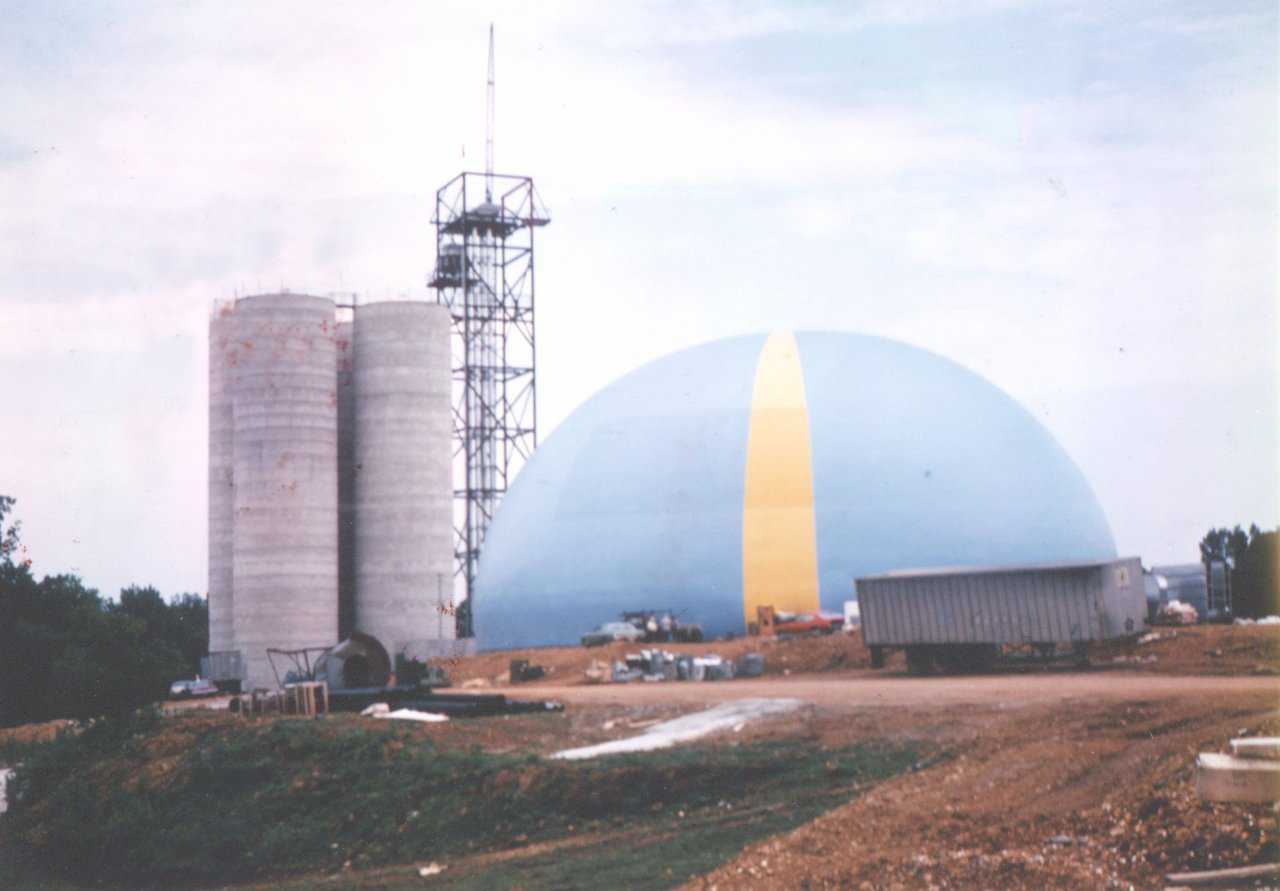
The Wheeler Grain Storage was built in 1982 near Athens, Alabama. This dome has a diameter of 150’, a height of 75’ and an excavated portion of 20’ under the dome. That excavated portion increased the volume for storing grain. It was outfitted with a tunnel for extraction, and it had a fan system for aerating the grain.
The West Texas Explosion: An Avoidable Tragedy
Ammonium Nitrate
The ammonium nitrate storage in West, Texas that exploded on April 17 illustrates how other structures could have that same problem.
Ammonium nitrate is a fantastic explosive that’s used in the mining industry worldwide. It’s also a spectacularly good fertilizer used on farms throughout the United States. So we have many fertilizer storages scattered across our country, as farming is a major industry.
Monolithic has designed and built many fertilizer storages, including many ammonium nitrate storages and several ammonium nitrate blasting materials storages.
When building a storage for ammonium nitrate, it’s important to remember that ammonium nitrate must be kept free from any contact with organic materials since organic materials are the key to making ammonium nitrate explode. That’s also the reason for keeping ammonium nitrate dry.
Monolithic Bulk Storages
The Monolithic Dome is an all-concrete structure that is insulated on its exterior. It keeps stored materials cool, and when equipped with an air conditioner the Monolithic Dome keeps products dry despite the humidity in the air.
The most important criteria to remember, however, is that the Monolithic Dome is blast-resistant, can’t be burned, will not support combustion and keeps the ammonium nitrate in a safe condition.
A Fire Survivor
We had one huge ammonium nitrate storage in Houston that had a wild fire burn against it. A high wind forced this wild fire against two wood buildings that were leaning against the dome. One of those wood structures contained 300 gallons of oil.
That created a super opportunity for a spectacular explosion. But nothing happened!
Reason: The outside of a Monolithic Dome is fire-safe. It will not burn.
Monolithic Domes are also reasonably priced and have a lifetime measured in centuries. Obviously and sadly, explosions such as the tragedy that West experienced simply do not have to happen.
We have never had an ammonium nitrate storage explode. Once, we did have a grain storage explode (see photos). That was a huge explosion.
If it had been ammonium nitrate, it would have looked pretty much the same. The ultra-strong, lower portion of the Monolithic Dome would have forced the explosion vertically out through the top, taking the top off the dome, but preventing a disaster like the one in West.
In other words, the Monolithic Dome would have kept the explosion force vertical. Obviously, some force could have gone through a door, but in general, the main force would have been vertical.
Remember, the Monolithic Dome is the strongest, safest storage structure that can be built. More importantly, it is extremely cost-effective as compared to other structures and will last many times longer. Thus, in the long-term, the Monolithic Dome is far less expensive.
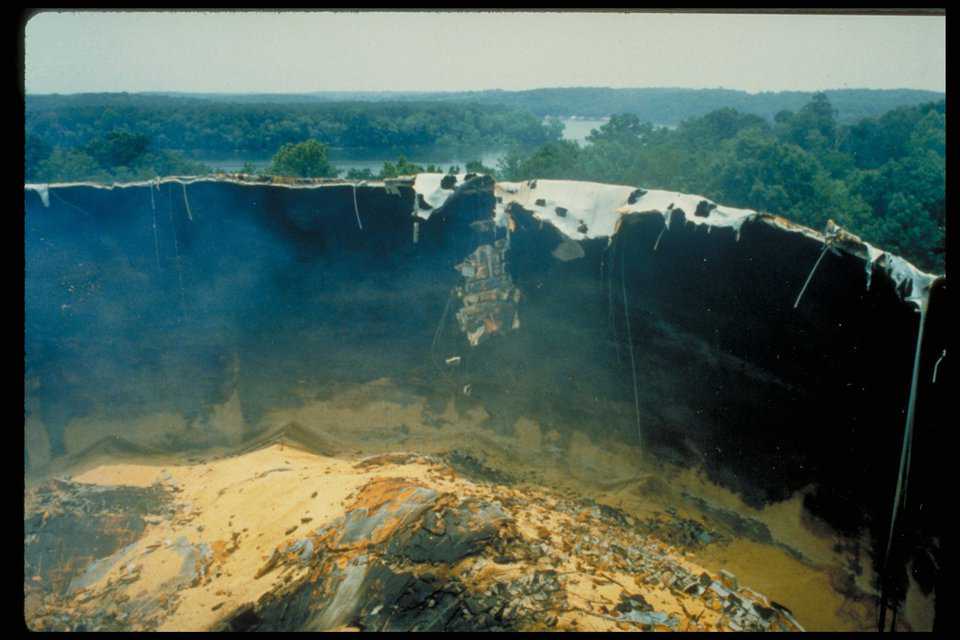
Wheeler Grain Storage: The grain did a slow burn for several months, while the owner and his team looked for a way to stop it. They were told it would explode, and one night it did! It awakened people four miles away! Note: The lower shell’s super-strong wall held the pressure from the methane explosion, and the top blew off. This is typical. The release of pressure tends to drag the broken roof section back into the dome. Almost no concrete landed outside the floor area.
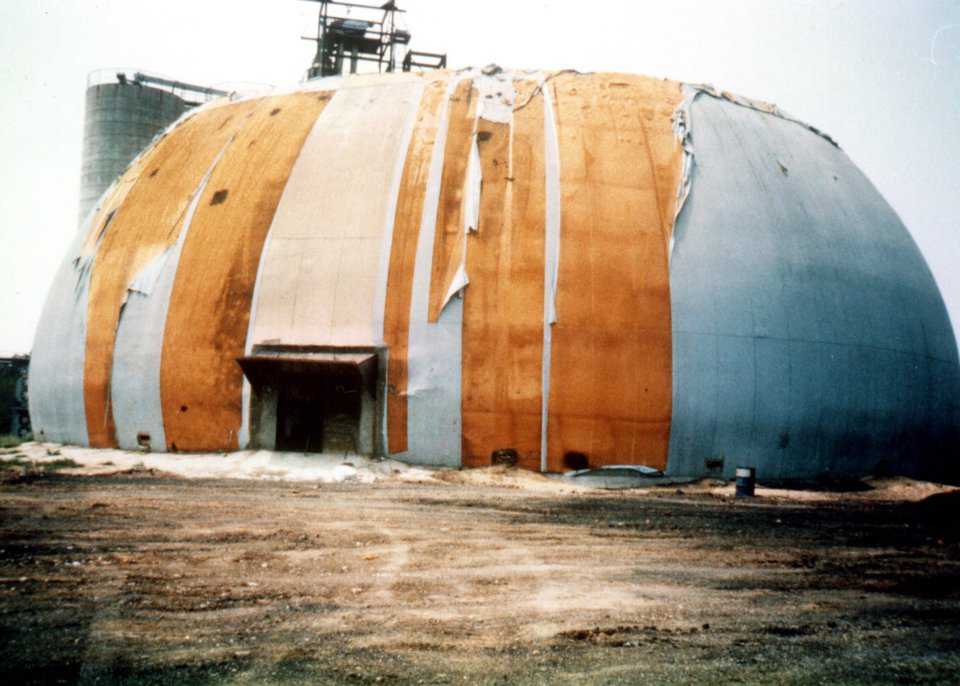
Wheeler Grain Storage: We offered to put the top back on the dome, but they did not consider it necessary as the need for storage had disappeared. So the dome stands as shown. It’s both a monument to its strength and blast-resistance and a testament to its longevity.
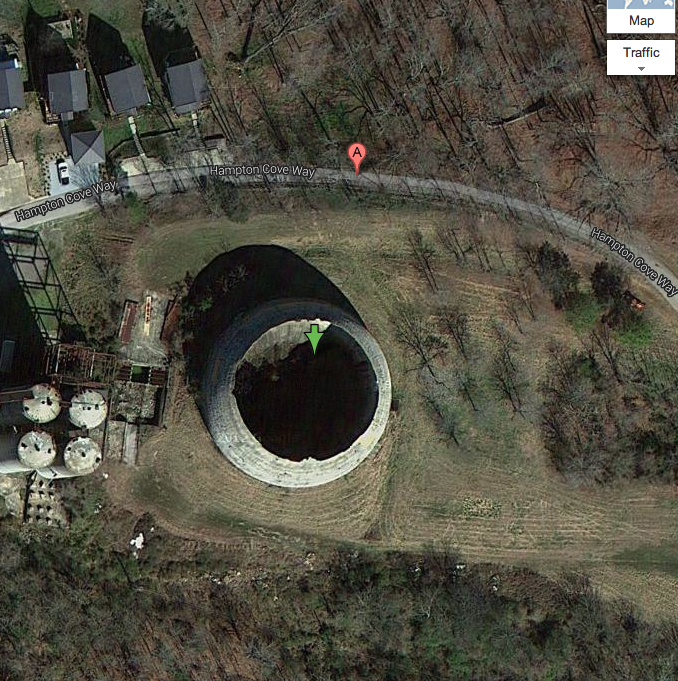
Wheeler Grain Storage: Twenty-five plus years later it still stands as an example of its strength. It released the energy vertically and not horizontally where it would have done a lot of collateral damage.
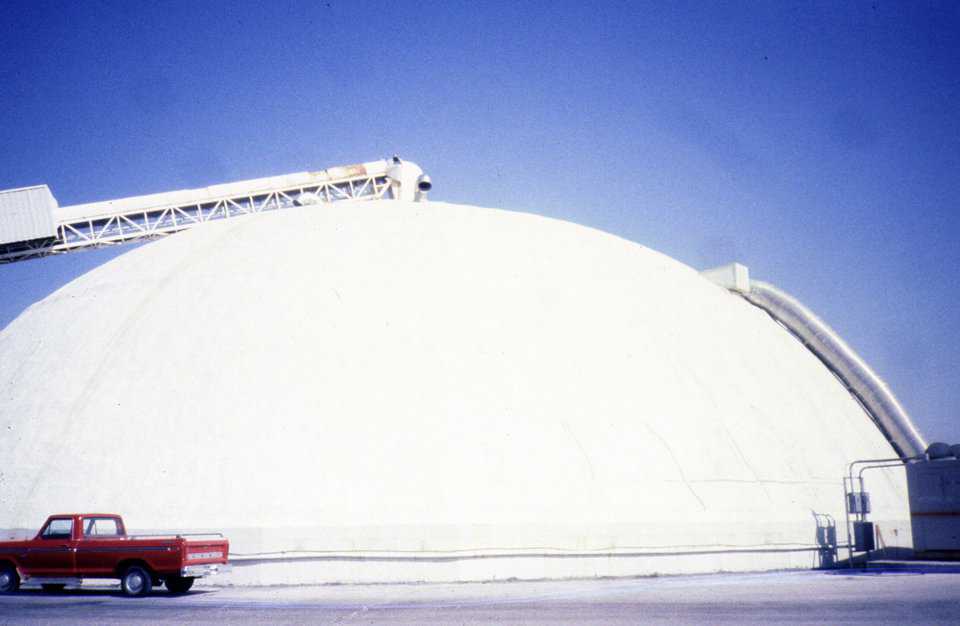
Ammonium Nitrate Storage — At the Peabody Coal plant in Kenova, West Virginia, this Monolithic Dome is the largest ammonium nitrate (blasting powder) storage built since Texas City was blown off the map in the 1950s. Ammonium nitrate mixed with diesel fuel was used to break-up the rock over the coal seams of Kentucky.
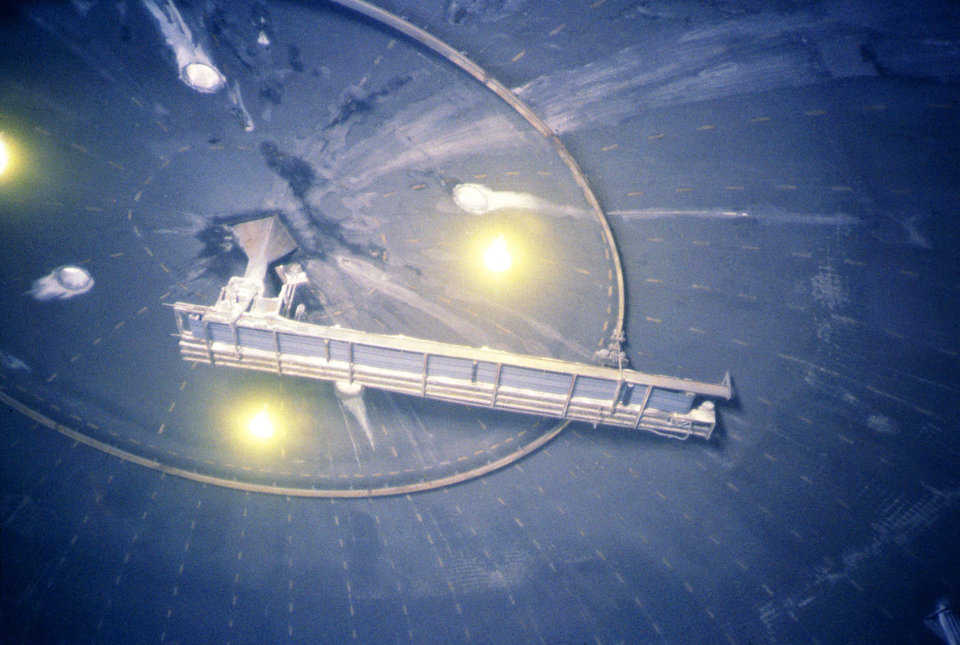
The Monolithic Dome is strong enough to carry the conveyors on top of it and support the circulating conveyor from the roof. It allows for a much larger, spread-out storage pile.
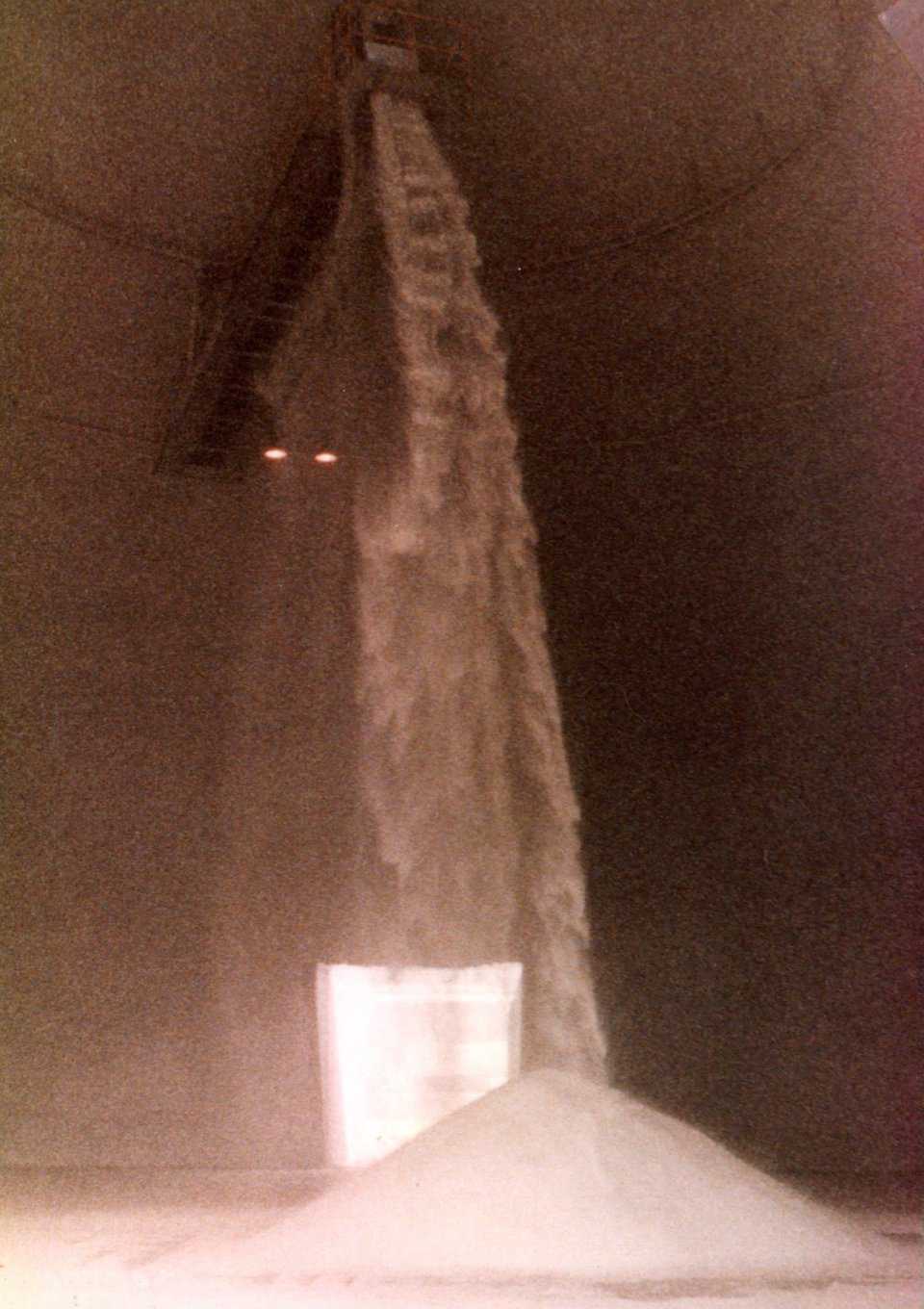
As can be seen, the storage is about empty. As the pile builds up, the rotator moves around to create a much better distributed pile.